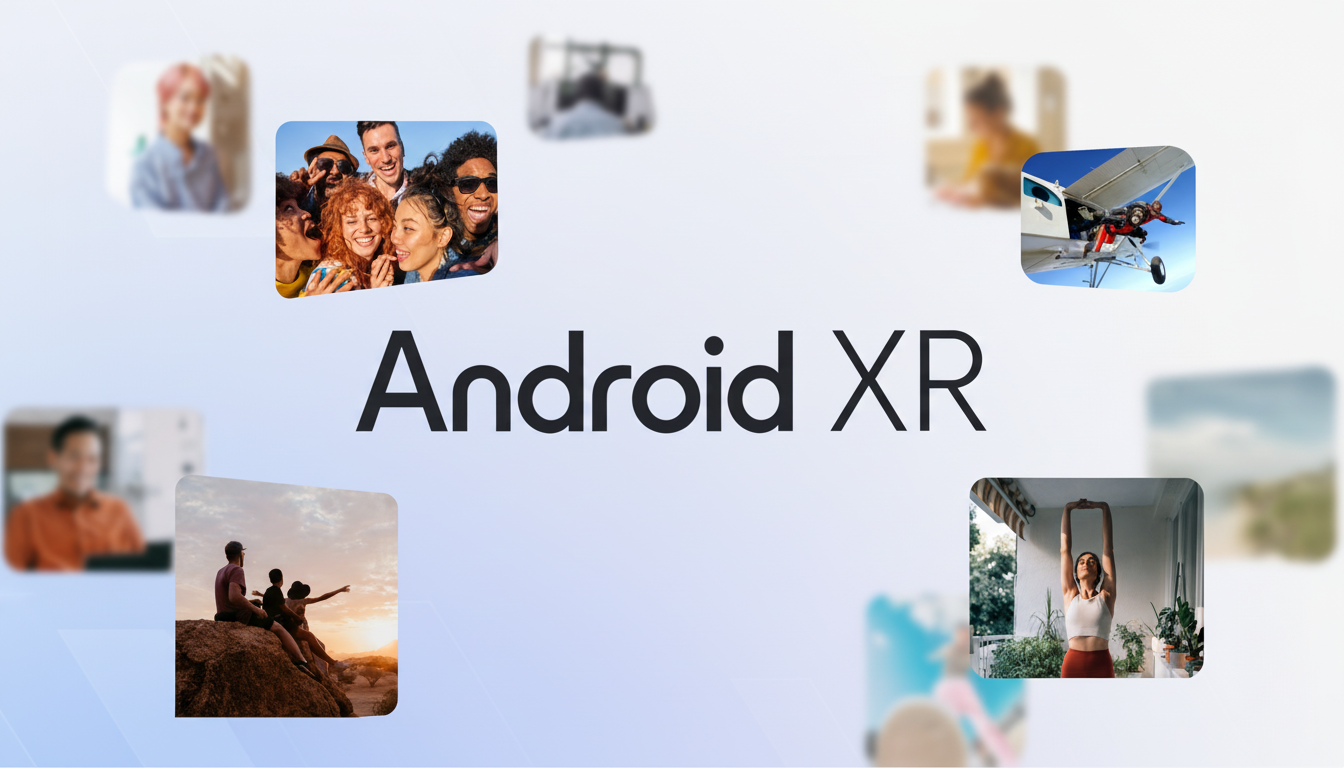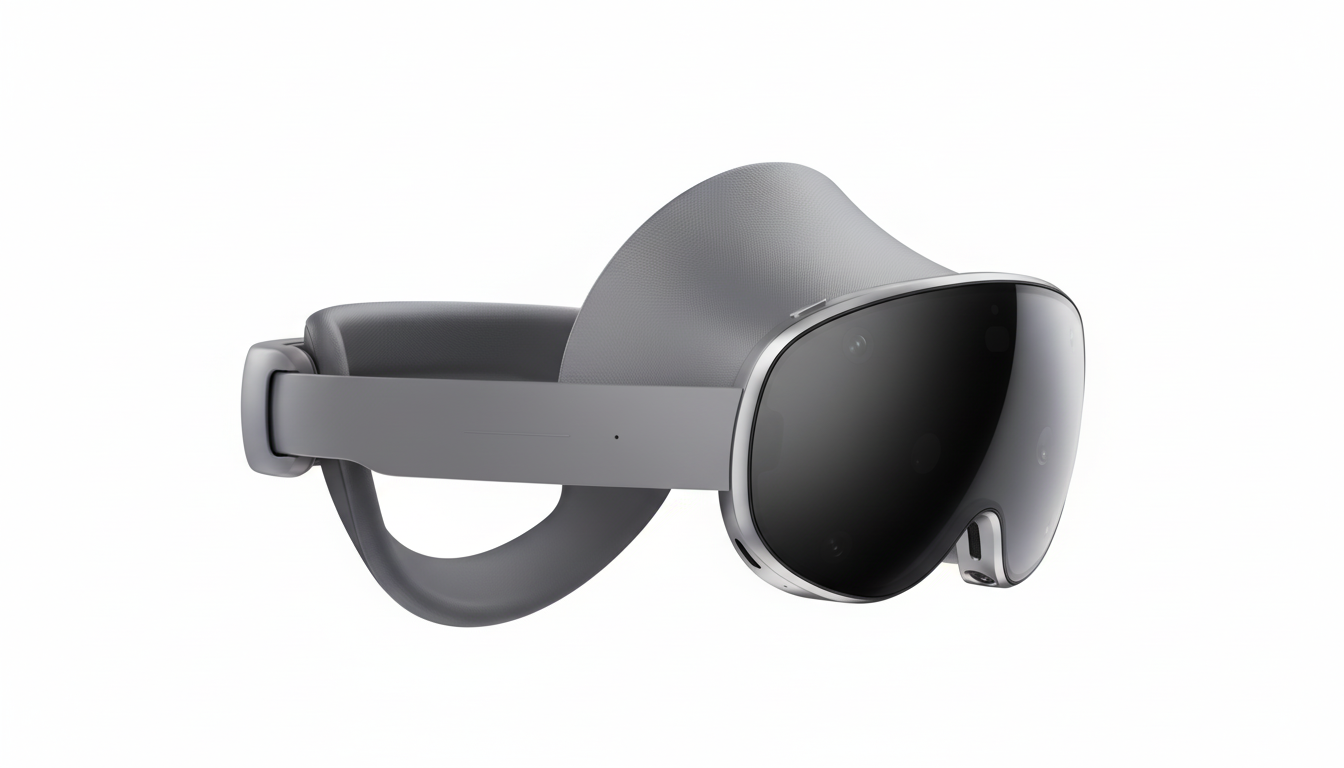Google and Magic Leap recently exposed a new prototype of Android XR glasses at the Future Investment Initiative in Riyadh. This presentation shows a strong commitment to lightweight, daily augmented reality, rather than where users interact with the world through heavy complicated headsets.
This concept bottles up a light path to Android XR and is Google’s first public display of its concept since appearing briefly at a developer conference a few months ago.
- Prototype prioritizes lightweight daily use over bulky headsets
- Optics combine Magic Leap waveguides with microLED engine
- Context-aware assistance powered by Gemini and sensors
- Hybrid on-device and cloud AI aims to balance key trade-offs
- Partnership positions firms to deliver reference designs to OEMs
- Market outlook highlights hurdles and AI-native opportunities

Prototype prioritizes lightweight daily use over bulky headsets
Glasses-first XR aims to be comfortable enough, stylish enough, and useful enough to be able to use daily. The prototype packs several sensors, including stereo cameras, lidar, and eye-tracking hardware, as well as Google’s Assel for variable-distance eye-tracking. With heavy power draw comes a heavy battery. The batteries in the prototype glasses make up a third of their total weight, and they will need it.
- Stereo cameras
- Lidar
- Eye-tracking hardware
- Google’s Assel for variable-distance eye-tracking
Optics combine Magic Leap waveguides with microLED engine
The glasses themselves pair Magic Leap’s waveguides and precision optics with Google’s Raxium microLED light engine. MicroLED is coveted for high brightness and power efficiency—two critical factors in the context of waveguide-based AR, where displays need to be legible in sunlight without draining a pocketable battery.
For context, Magic Leap 2, the firm’s last commercial device, supported up to about 2,000 nits, a useful baseline for outdoor legibility; microLED promises even better efficiency at comparable brightness. Sensors positioned around the frame grab the scene through cameras and microphones, while in-lens displays generate anchored overlays with virtually no visual drift. Shahram Izadi, Google’s XR lead, emphasized how the optical precision helps keep digital content “locked” to reality—essential whether you need to read a label on a storefront or line up guidance over a golf ball without jitter.
Importantly, Magic Leap says this is a prototype and a reference design for the broader Android XR ecosystem. That suggests there’s a road ahead where partners can implement core components, like waveguides and microLED engines, while designing out the rest of the frames, sensors, or compute modules to various use cases and price points.
Context-aware assistance powered by Gemini and sensors
The demo relied heavily on Google’s Gemini to deliver a context-aware assistance system. Point your look down a road, ask about remarkable architecture or shops, and text overlays will emerge within view. In a retail setting, the system scrutinized patterns on a rug, then, based on stylistic cues, offered matching alternatives. Even entertainment got a mention: The assistant gave advice on how to improve his golf game after a poor shot, based on what the cameras saw.

Hybrid on-device and cloud AI aims to balance key trade-offs
This is a thread from earlier prototypes referred to as Martha inside, balancing on-device understanding and cloud-scale models. The challenge is that responsiveness, privacy, and battery life will all need to be balanced. The solution will most likely be a hybrid strategy: rapid on-device understanding for tracking and object edges, with heavier cloud language and vision reasoning while connected.
This is a technical innovation, as it allows for much faster and more complicated use cases than are currently possible with single limited modalities. As a result, many popular AR/VR devices today play videos on a 1280 × 720 display without any vision; Martha would distinguish individual drummers in a crowd and keep track of them. This is achieved via a pipeline approach: processing based on modality, processing based on attention, etc.
Partnership positions firms to deliver reference designs to OEMs
Magic Leap will serve as an AR ecosystem partner rather than as a consumer company, drawing on many years of optics R&D and manufacturing experience. It aligns well with Google’s platform ambitions, particularly after it acquired Raxium for microLED displays in 2022. Together, the two firms can offer a reference path from optics to operating systems to AI services to OEMs who are wary of integrating supplies.
A renewed three-year agreement, confirmed by both companies, provides the two enough time to turn a stage demo into developer kits. This reflects Magic Leap’s decision to pivot from an enterprise-first hardware business to an increasing priority.
Market outlook highlights hurdles and AI-native opportunities
Analysts at IDC and other firms might be sensing a second wind in spatial computing gaining pace as the lighter form factors finally arrive, but in another sense, it turns out little has changed in nearly three years. Meta and Apple basically own the market and the remaining obstacles are ones we are more than familiar with.
- Battery life
- Socially appropriate camera use
- Low-latency tracking that is both accurate and dependable
- Pricing that keeps AR accessible beyond niche enthusiasts
Ultimately, Google is placing a massive bet that AI-native use cases, including instant scene understanding, contextual replies, and advice suggestions will make the glasses feel simply add-on and then wear them, not as if they are an experiment. In the meantime, the message is loud and unambiguous: it is not just a headset tale. With Magic Leap’s glasses, as well as a microLED and AI stack from Google, reality-blurring glasses will soon be available to the masses and no longer a concept video.

